Abstract
During the course of a clinical trial to assess the value of adjuvant liver perfusion of 5-fluorouracil after surgery for colorectal cancer, liver blood flow was measured in 14 patients. Access to the portal circulation was achieved by dilatation and cannulation of the obliterated umbilical vein. The clearance from the liver of a bolus of 133Xe was monitored using a gamma-ray camera so that blood flow from different areas of the liver could be calculated. The clearance curve of 133Xe was a double exponential of which the initial fast component accounted for a consistently high proportion of the total clearance. The perfusion studies have shown wide differences in blood flow to the various areas of the liver in the same patient, in addition to a wide variation in perfusion rate between the 14 patients. This technique of quantitative estimations of liver blood flow to different areas of the liver may have importance in planning operative procedures and understanding the haemodynamic mechanisms involved in liver disease.
Full text
PDF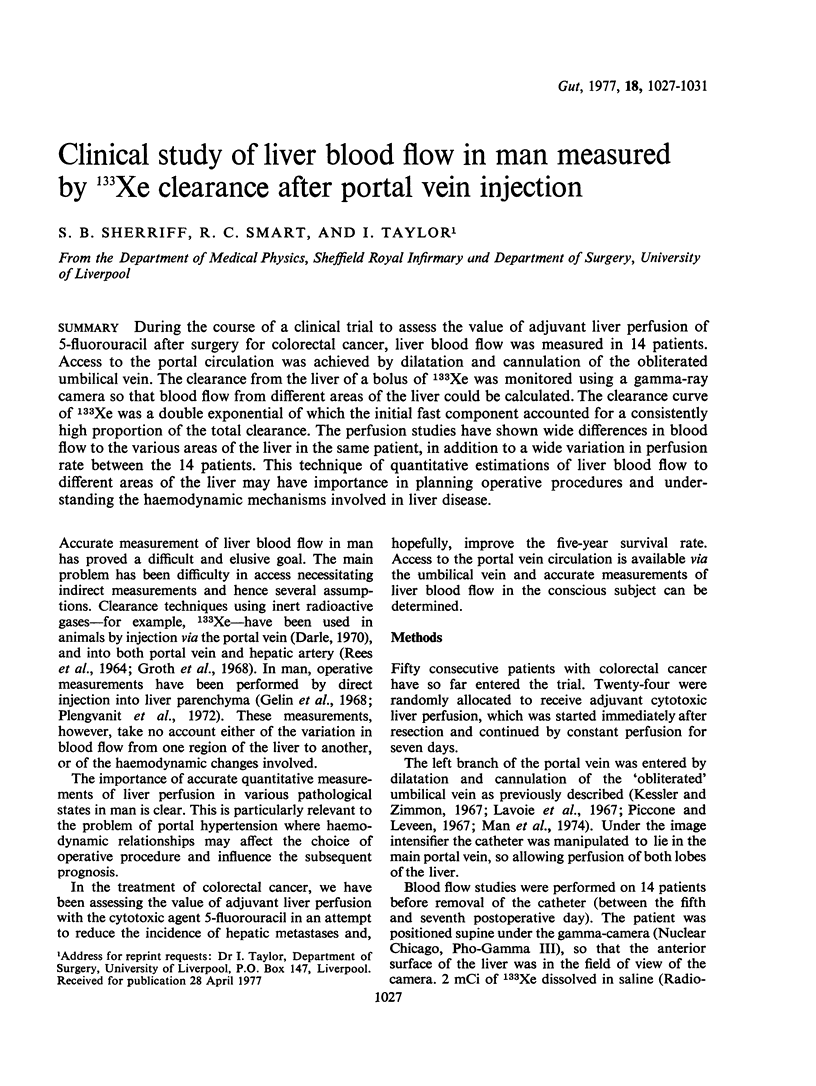
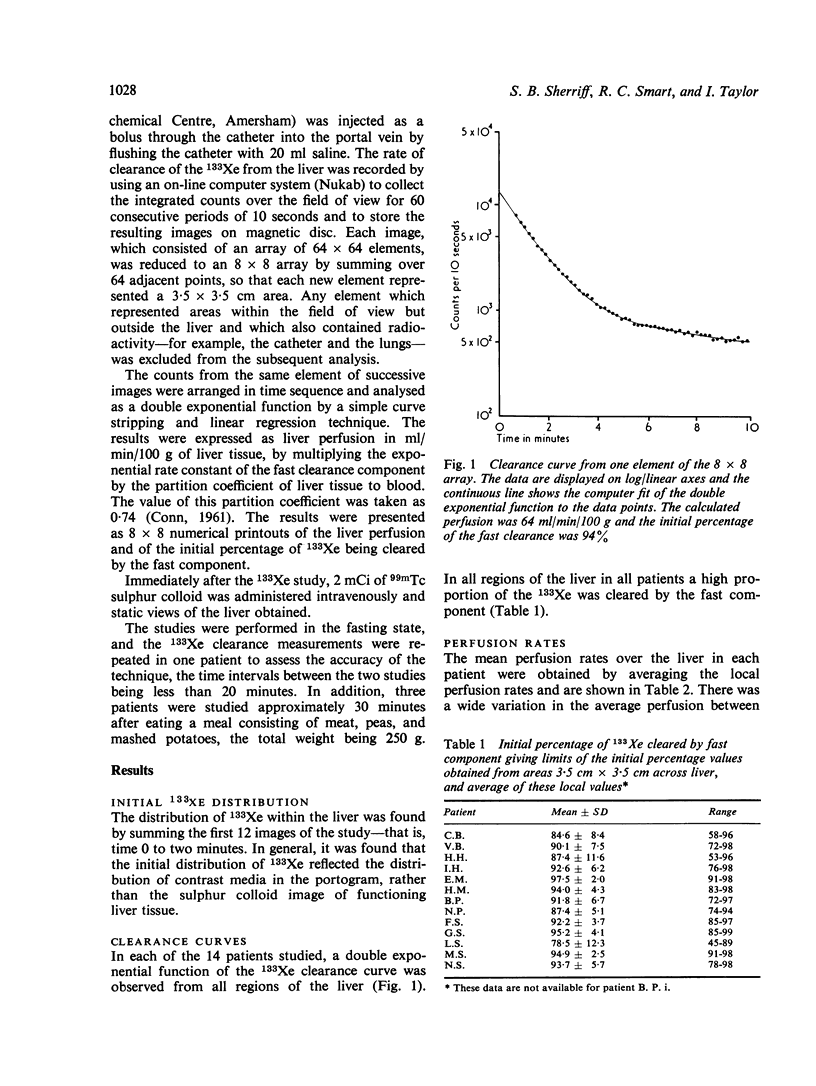
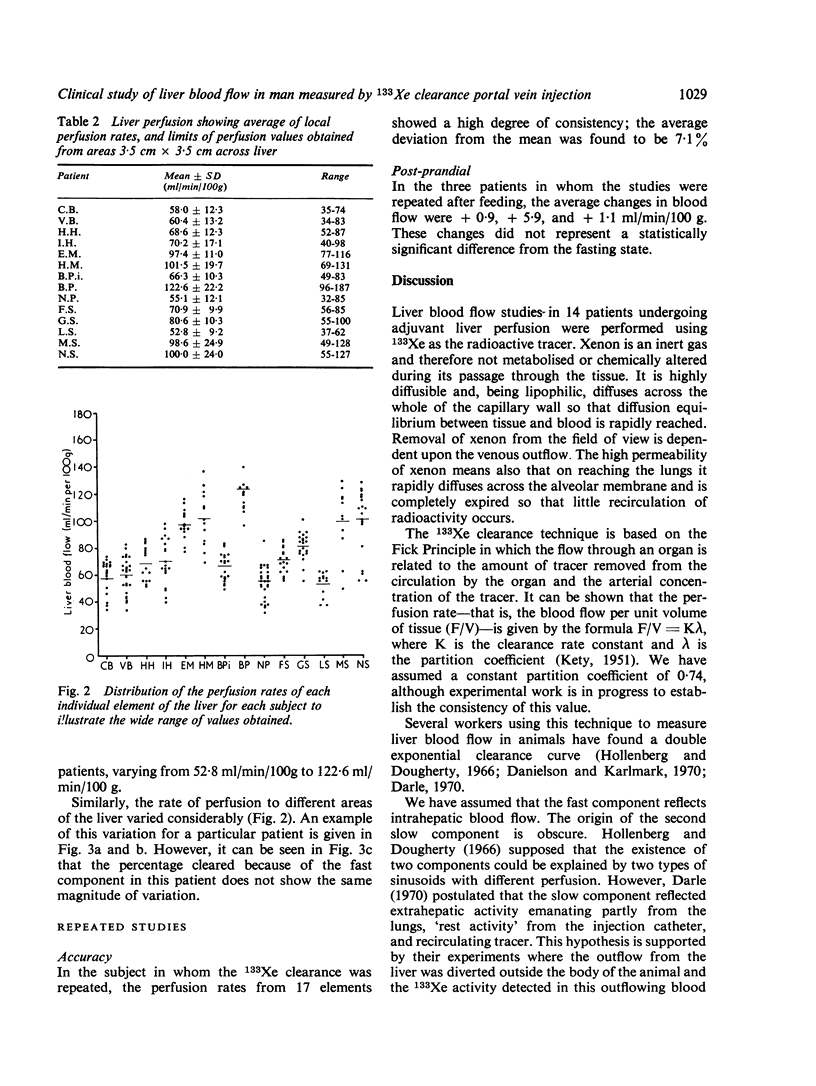
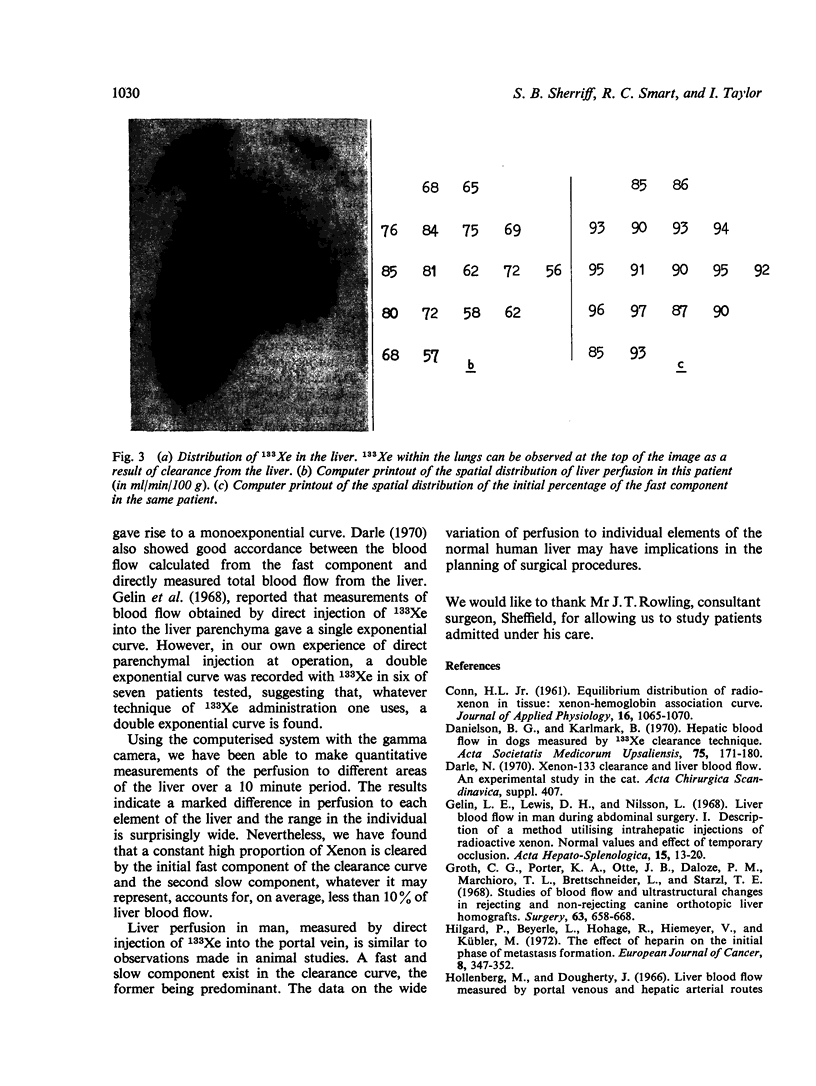
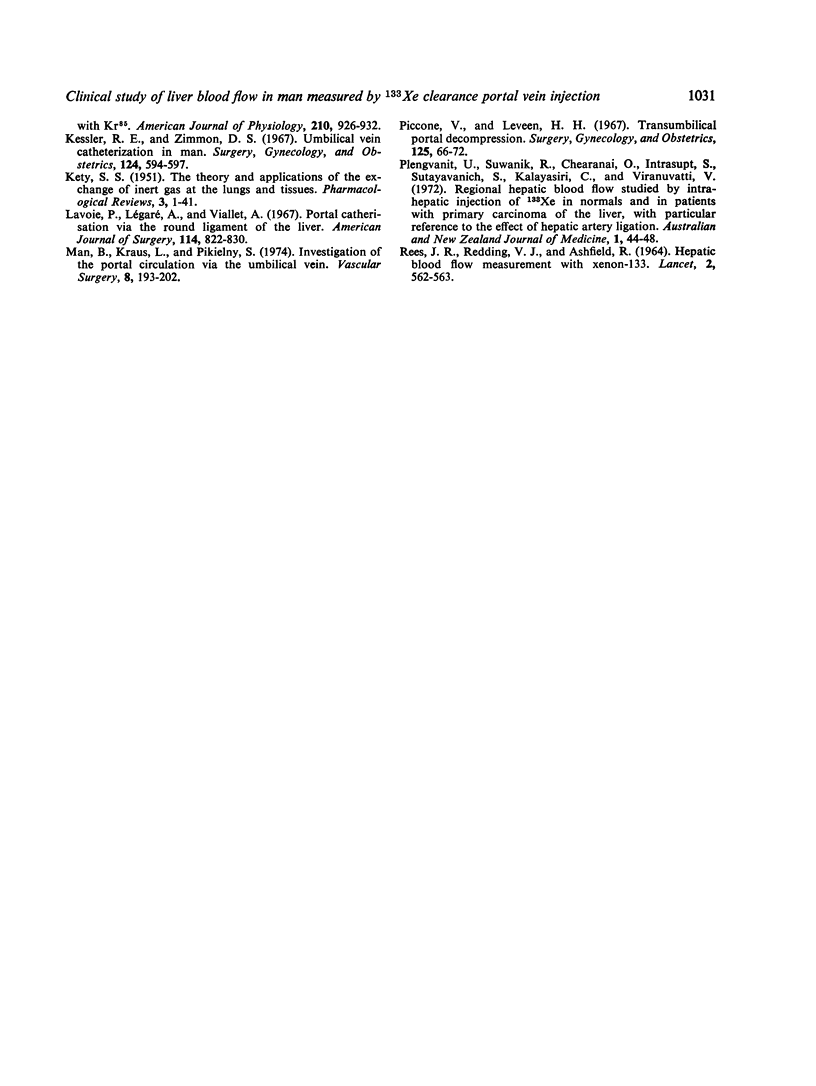
Images in this article
Selected References
These references are in PubMed. This may not be the complete list of references from this article.
- CONN H. L., Jr Equilibrium distribution of radioxenon in tissue: xenon-hemoglobin association curve. J Appl Physiol. 1961 Nov;16:1065–1070. doi: 10.1152/jappl.1961.16.6.1065. [DOI] [PubMed] [Google Scholar]
- Danielson B. G., Karlmark B. Hepatic blood flow in dogs measured by Xe133 clearance technique. Acta Soc Med Ups. 1970;75(3-4):171–180. [PubMed] [Google Scholar]
- Gelin L. E., Lewis D. H., Nilsson L. Liver blood flow in man during abdominal surgery. 1. Description of a method utilizing intrahepatic injections of radioactive xenon (133Xe). Normal values and effect of temporary occulsion. Acta Hepatosplenol. 1968 Jan-Feb;15(1):13–20. [PubMed] [Google Scholar]
- Groth C. G., Porter K. A., Otte J. B., Daloze P. M., Marchioro T. L., Brettschneider L., Starzl T. E. Studies of blood flow and ultrastructural changes in rejecting and nonrejecting canine orthotopic liver homografts. Surgery. 1968 Apr;63(4):658–668. [PMC free article] [PubMed] [Google Scholar]
- Hilgard P., Beyerle L., Hohage R., Hiemeyer V., Kübler M. The effect of heparin on the initial phase of metastasis formation. Eur J Cancer. 1972 Jun;8(3):347–352. doi: 10.1016/0014-2964(72)90031-x. [DOI] [PubMed] [Google Scholar]
- Hollenberg M., Dougherty J. Liver blood flow measured by portal venous and hepatic arterial routes with Kr-85. Am J Physiol. 1966 May;210(5):926–932. doi: 10.1152/ajplegacy.1966.210.5.926. [DOI] [PubMed] [Google Scholar]
- KETY S. S. The theory and applications of the exchange of inert gas at the lungs and tissues. Pharmacol Rev. 1951 Mar;3(1):1–41. [PubMed] [Google Scholar]
- Kessler R. E., Zimmon D. S. Umbilical vein catheterization in man. Surg Gynecol Obstet. 1967 Mar;124(3):594–597. [PubMed] [Google Scholar]
- Lavoie P., Légaré A., Viallet A. Portal catheterization via the round ligament of the liver. Am J Surg. 1967 Dec;114(6):822–830. doi: 10.1016/0002-9610(67)90400-x. [DOI] [PubMed] [Google Scholar]
- Man B., Kraus L., Pikielny S. Investigation of the portal circulation via the umbilical vein. Vasc Surg. 1974 May-Jun;8(3):193–202. [PubMed] [Google Scholar]
- Piccone V. A., LeVeen H. H. Transumbilical portal decompression. Surg Gynecol Obstet. 1967 Jul;125(1):66–72. [PubMed] [Google Scholar]
- Plengvanit U., Suwanik R., Chearanai O., Intrasupt S., Sutayavanich S., Kalayasiri C., Viranuvatti V. Regional hepatic blood flow studied by intrahepatic injection of 133 xenon in normals and in patients with primary carcinoma of the liver, with particular reference to the effect of hepatic artery ligation. Aust N Z J Med. 1972 Feb;2(1):44–48. doi: 10.1111/j.1445-5994.1972.tb03907.x. [DOI] [PubMed] [Google Scholar]
- REES J. R., REDDING V. J., ASHFIELD R. HEPATIC BLOOD-FLOW MEASUREMENT WITH XENON 133. EVIDENCE FOR SEPARATE HEPATIC-ARTERIAL AND PORTAL-VENOUS PATHWAYS. Lancet. 1964 Sep 12;2(7359):562–563. doi: 10.1016/s0140-6736(64)90623-3. [DOI] [PubMed] [Google Scholar]



